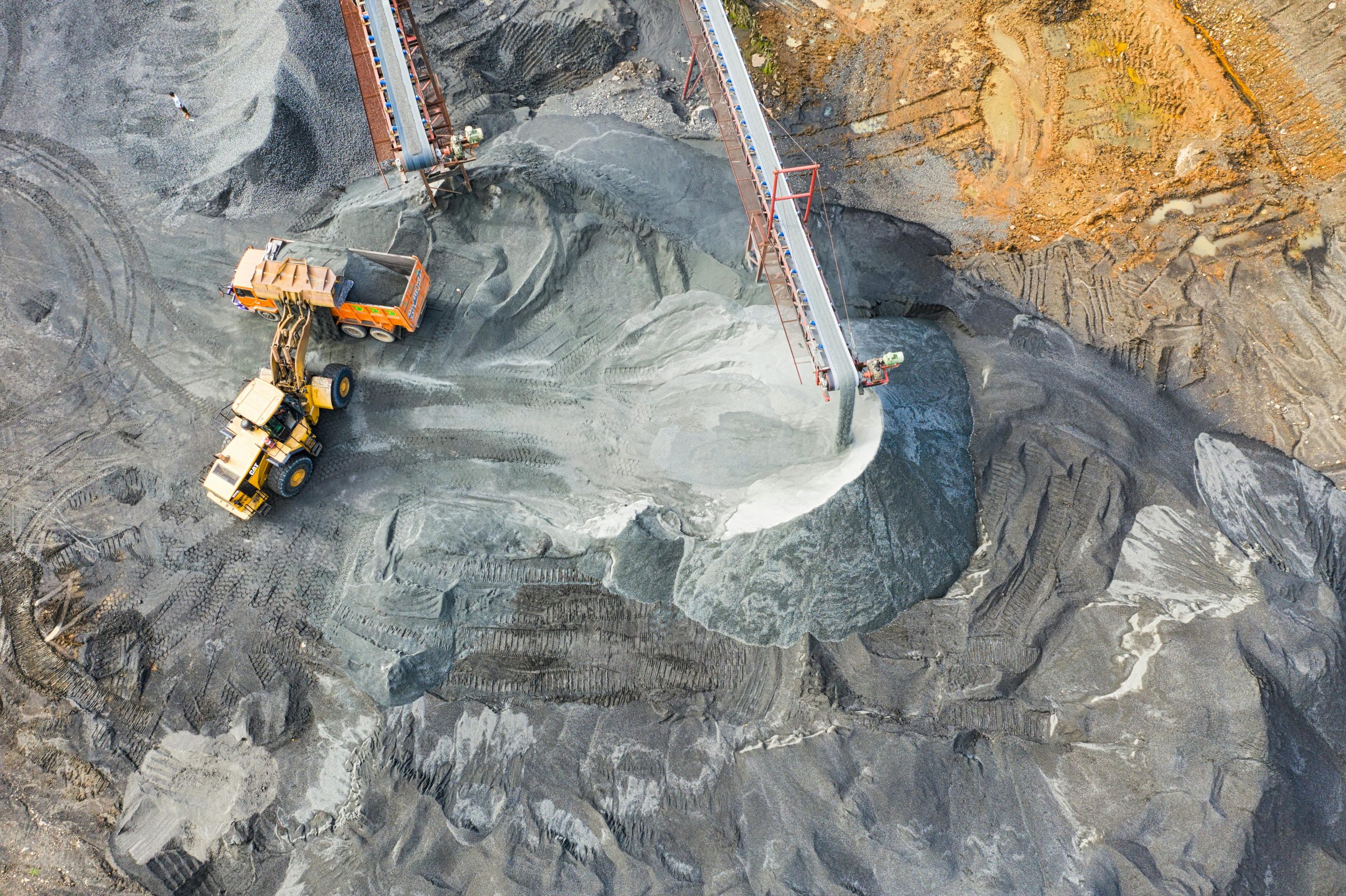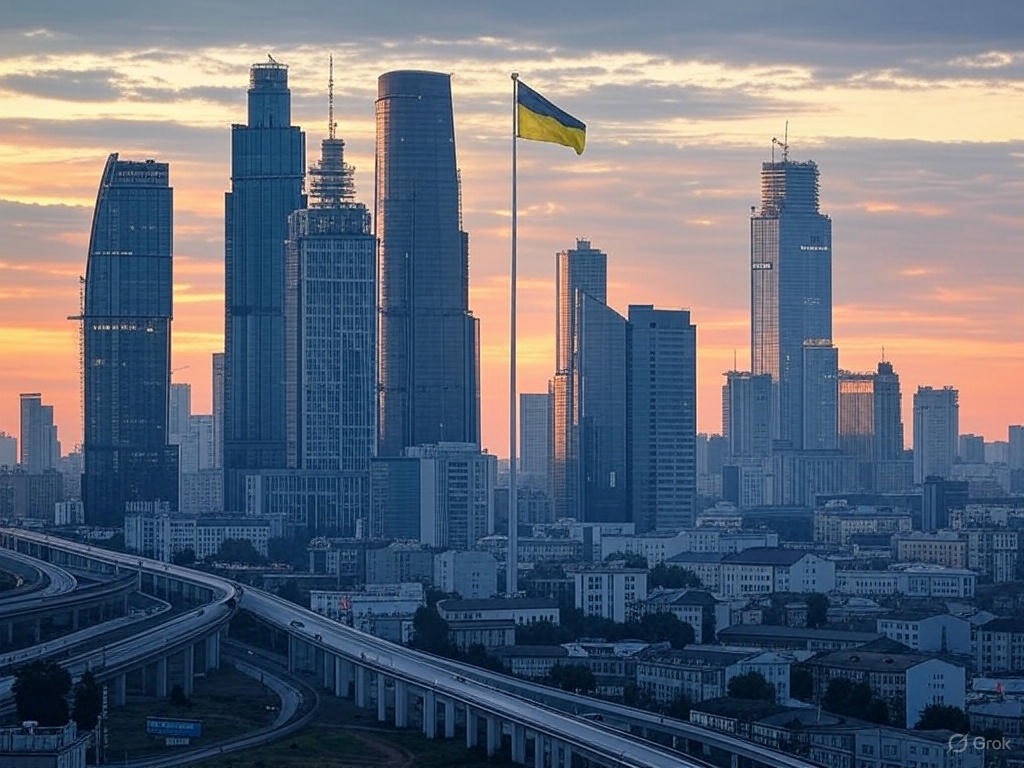The global transition towards electric vehicles (EVs) and renewable energy systems is not just an environmental goal; it’s triggering a seismic shift in resource demand, creating significant opportunities and complex risks for investors. At the heart of this transformation lie critical minerals, particularly lithium and Rare Earth Elements (REEs). Understanding the intricate dynamics governing their supply is becoming essential for strategic investment decisions.
Lithium: Powering the Future, Concentrated in the Triangle
Demand for lithium, the irreplaceable element in today’s high-performance batteries, is projected to skyrocket – potentially increasing by as much as 40-fold by 2040 under the International Energy Agency’s (IEA) ambitious Net Zero Emissions by 2050 (NZE) scenario. This unprecedented demand puts enormous focus on Latin America’s “Lithium Triangle” – Chile, Bolivia, and Argentina – which collectively holds around 53% of the world’s known lithium resources (based on USGS 2024 estimates totaling ~98 Mt globally, with Bolivia holding ~21 Mt, Argentina ~20 Mt, and Chile ~11 Mt).
Cooperation vs. Competition: The Lithium Triangle’s Divergent Paths
While logic might suggest a coordinated approach – perhaps a “Lithium OPEC” to maximize negotiating power over pricing, technology transfer, and investment terms – the reality on the ground is far more fragmented. Persistent talk of collaboration, particularly pushed by nations like Argentina seeking to leverage collective strength, has largely given way to competition driven by distinct national policies, political climates, and approaches to resource management. Understanding these differences is crucial for assessing investment risks and opportunities:
- Bolivia: Vast Potential, Cautious Steps: Home to the immense Salar de Uyuni, potentially the world’s largest single lithium deposit (estimated 21 million tonnes), Bolivia has historically struggled to translate potential into production. Nationalization in 2008, driven by a strong sense of resource sovereignty, significantly deterred foreign investment and technical expertise needed for efficient extraction, particularly from the challenging high-magnesium brines of Uyuni. Recent years have seen a slight softening, exemplified by deals with a Chinese consortium led by CATL (≈$1.4 billion committed) and Russia’s Uranium One (part of Rosatom) for direct lithium extraction (DLE) pilot plants. However, Bolivia insists on maintaining majority state control (at least 51%) in all ventures. This, coupled with a history of political instability and potential for contract revisions, means investors remain wary. The environmental sensitivity of the Salar de Uyuni also adds complexity. While Bolivia is exploring creative financing like potential “lithium-backed bonds,” significant operational and political risks persist, limiting near-term large-scale output compared to its neighbours.
- Chile: Established Leader, Navigating State Control: As the world’s second-largest producer (after Australia), Chile has a mature lithium industry centered on the exceptionally rich Salar de Atacama, dominated by established players like SQM and Albemarle, whose combined production reached approximately 285,000 tonnes LCE (Lithium Carbonate Equivalent) in 2024, with projections nearing 305,000 tonnes for 2025. However, Chile is undergoing a strategic shift. President Boric’s 2023 National Lithium Strategy mandates that future projects must be structured as public-private partnerships where the state holds a majority stake, aiming to capture more value domestically. Existing contracts are currently respected, but alignment is key. The complex negotiations to align existing operations with this new model saw a major step forward in April 2025 when the landmark Codelco-SQM joint venture received antitrust clearance. While aiming for sustainable development and greater national benefit, this move introduces uncertainty for investors regarding long-term profitability, operational control, and potential political interference. Furthermore, concerns over water usage in the arid Atacama region and impacts on indigenous communities remain significant operational and reputational challenges. Successfully managing this transition without chilling investment is Chile’s key challenge.
- Argentina: Open for Business, Battling Volatility: In contrast to its neighbours, Argentina offers a more decentralized and currently more investor-friendly framework. Mining rights are controlled at the provincial level, leading to a generally welcoming environment for foreign capital. Numerous international firms (from the US, Canada, Australia, China) are actively developing projects, particularly in salars like Hombre Muerto and Cauchari-Olaroz. Production has ramped up dramatically, rocketing to approximately 75,000 tonnes LCE in 2024, with industry forecasts anticipating around 130,000 tonnes in 2025, positioning Argentina to potentially solidify its rank as the world’s third-largest producer. Royalty rates are comparatively stable, though subject to export taxes. The primary deterrent here is Argentina’s chronic macroeconomic instability – persistent high inflation, currency controls, and a history of policy shifts pose significant financial risks. While the current administration under President Milei advocates for market-friendly reforms, the path to sustained stability is uncertain, and implementation faces political and social hurdles. Investors must weigh the geological potential and relatively open regulatory environment against substantial economic and political volatility.
Implications for Lithium Supply and Investment: This divergence means a unified “Lithium OPEC” remains unlikely. Bolivia and Chile’s drive for greater state control may slow project development timelines or favour state-backed enterprises accustomed to such structures. Western companies might find Argentina’s framework more appealing, despite the economic risks, or increasingly look to diversify supply sources outside the Triangle (e.g., Australia, Canada, USA, potentially Africa). This fragmented landscape suggests lithium supply growth could be uneven, subject to political shifts and regulatory changes. Crucially, investors have recently navigated extreme price volatility, with lithium prices plummeting through much of 2024 before staging a partial recovery in early 2025, underscoring the market risks inherent in this rapidly evolving sector. Environmental stewardship and community relations are also becoming increasingly critical factors affecting project viability and timelines.
Navigating Risk: Sophisticated Finance Enters the Fray
Given the geopolitical and economic risks inherent in the Lithium Triangle and other emerging resource frontiers, sophisticated financial players, particularly those centered in hubs like London, are employing advanced strategies to gain exposure while mitigating downside:
- Mezzanine Debt: Offering loans that sit between traditional debt and equity, often with conversion features allowing lenders to participate in equity upside if the project succeeds, while providing greater security than pure equity if it falters.
- Streaming & Royalty Agreements: Providing upfront capital to miners in exchange for the right to purchase a fixed percentage of future production at a predetermined, often discounted, price (streaming) or receive a percentage of the mine’s revenue (royalty). This secures long-term supply or revenue streams for the financier and provides non-dilutive capital for the producer.
- Prepaid Offtake Agreements: Commodity trading houses, and sometimes end-users like automakers, pay producers in advance for future deliveries of lithium. This locks in supply, hedges against price increases, and effectively provides financing to the mining company.
- Political Risk Insurance (PRI): Specialized insurance policies, often sourced through markets like Lloyd’s of London, designed to cover losses arising from specific political events such as expropriation, nationalization, currency inconvertibility, or political violence.
- Multilateral Agency Involvement: Support or guarantees from development banks (like the World Bank’s MIGA) can provide a layer of political comfort and potentially improve financing terms, signaling long-term stability.
These mechanisms allow capital to flow into necessary projects while creating complex, layered financial structures that aim to insulate investors from specific sovereign or operational risks, effectively creating globalized webs of finance underpinning the mineral supply chain.
Beyond Lithium: The Rare Earth Elements (REEs) Challenge and China’s Dominance
Lithium is critical, but it’s only part of the story. Rare Earth Elements – a group of 17 chemically similar metals – are indispensable for the high-strength permanent magnets used in EV motors and wind turbines, as well as in advanced electronics, medical imaging, and crucial defence applications. The REE landscape presents a different, arguably more acute, geopolitical challenge: profound global dependence on China.
REEs are not exceptionally rare geologically, but deposits that are economically viable and can be processed cleanly are less common. Processing is complex, often involving hazardous chemicals and generating radioactive waste, presenting significant environmental challenges that China was willing to bear earlier and more extensively than many Western nations, contributing to its current dominance.
- The Global REE Picture: China holds the largest reserves (approx. 34-37%, totaling around 44 million tonnes) but its dominance is starker in production and especially processing. It accounts for roughly 68-70% of global REE mining (approximately 240,000 tonnes REO equivalent/year in 2024) and a staggering 85-90% of the vital mid-stream processing and separation – the stage where mined ores are turned into usable oxides and metals. The US, despite having the Mountain Pass mine (the second-largest single source, ~43,000 tonnes/year), historically sent most of its concentrate to China for processing. However, this practice ceased abruptly in April 2025 following prohibitive Chinese tariffs; MP Materials now stockpiles its concentrate while accelerating the commissioning of its own refining facility in Texas. Australia’s Lynas Rare Earths (~20,000 tonnes/year) is the most significant non-Chinese producer and processor. Other countries like Brazil, Vietnam, India, and Russia have substantial reserves but minimal current production. Myanmar has emerged as a significant source, often through unregulated mining feeding directly into China, raising ESG concerns. Russia produces very little (~2,500 tonnes/year).
China’s Strategic Leverage: A Potent Tool?
China’s control over REE processing grants it significant short-to-medium-term leverage. This isn’t theoretical; Beijing restricted exports to Japan in 2010 amid a territorial dispute, causing prices to spike and triggering global alarm. More recently, in late 2023, China banned the export of certain high-performance magnet manufacturing technologies, directly targeting Western efforts to build independent supply chains. The potential for restricting REE raw material exports, particularly in response to trade tensions (e.g., with the US), remains a credible threat that could severely disrupt Western EV, renewable energy, and defence industries.
However, this power has limits. Aggressive export restrictions could backfire long-term by dramatically increasing prices, thereby incentivizing and accelerating investment in non-Chinese mines and processing facilities (in Australia, the Americas, Africa). Furthermore, REEs are used in smaller quantities than bulk commodities, can be stockpiled more easily by governments and industry, and recycling efforts are growing. Substitution, while challenging for high-performance magnets, is also an active area of research. Russia’s own REE production is currently small, limiting its independent leverage, though closer coordination with China could amplify their collective influence.
The Western Response: A Concerted Push for Diversification
Acknowledging the strategic vulnerability, the US, EU, Japan, Australia, Canada, and other allied nations are actively collaborating to build more resilient REE supply chains independent of China:
- Developing Ex-China Resources: Significant investment is flowing into mining projects outside China. Examples include continued support for Lynas in Australia (including US Department of Defense funding for processing facilities in Texas), MP Materials’ efforts to onshore processing from its Mountain Pass mine in California (including a supply agreement with GM), the development of Brazil’s Serra Verde mine, exploration and development projects across Africa such as Rainbow Rare Earths’ Phalaborwa project in South Africa aiming to process gypsum stacks, and the potential development of the large Kiruna deposit in Sweden (though this is years away from production). This involves accepting potentially higher operating costs and stricter environmental oversight compared to historical practices in China.
- Building Domestic Processing Capacity: This is arguably the most critical bottleneck. Initiatives focus on establishing separation and metallization plants in allied countries. The Lynas and MP Materials processing plants in the US are key examples. Government funding supports R&D into more efficient and environmentally sound processing technologies.
- Enhancing Recycling: Creating circular economies for REEs, particularly from magnets in scrapped EVs and wind turbines, is a growing focus in Europe and Japan. While currently contributing a small percentage of supply, recycling holds significant long-term potential.
- Strategic Stockpiling: Governments like the US and Japan maintain strategic reserves of key REEs as a buffer against short-term disruptions.
- Research into Substitution and Efficiency: Companies like Tesla are actively researching electric motor designs that reduce or eliminate the need for REEs. Broader R&D aims to improve material efficiency.
- International Alliances: Initiatives like the Minerals Security Partnership (MSP) bring together allied nations to coordinate investment, policy, and R&D efforts to secure critical mineral supply chains collectively. This fosters integrated networks (e.g., Australian ore -> potentially Vietnamese or US processing -> European end-users).
- Trade Policies: Consideration is being given to trade incentives or standards that favour REEs sourced and processed outside of potentially adversarial nations.
This diversification effort is a complex, expensive, and long-term undertaking. China established its dominance over decades and retains cost advantages. However, the strategic imperative for greater “resource security” or “strategic autonomy” is now a powerful driver of policy and investment in the West.
Conclusion: Investing in the New Resource Geopolitics
The intense focus on lithium and rare earths underscores a fundamental reality: the transition to a low-carbon economy is profoundly reshaping global resource politics and creating a new geopolitical playing field. In the Lithium Triangle, national interests, resource nationalism, and economic realities are creating a complex and fragmented landscape, testing investors who must utilize sophisticated financial tools to manage inherent risks – risks recently highlighted by dramatic commodity price swings. Globally, China’s dominance in REE processing presents a strategic challenge that Western nations and their allies are actively working to counter through costly but necessary diversification efforts, underscored by recent trade actions impacting established supply routes.
For investors, securing access to these critical minerals – whether through direct investment in mining and processing, strategic financing arrangements, or positioning within downstream industries reliant on these inputs – is no longer a niche consideration. It is central to navigating the economic and geopolitical currents of the 21st century. Understanding these intricate supply chains, the political risks involved, the market volatility, and the strategic responses underway is paramount for identifying opportunities and managing exposure in this rapidly evolving resource game.
Disclaimer: Important Legal and Regulatory Information
This report is for informational purposes only and should not be construed as financial, investment, legal, tax, or professional advice. The views expressed are purely analytical in nature and do not constitute financial guidance, investment recommendations, or a solicitation to buy, sell, or hold any financial instrument, including but not limited to commodities, securities, derivatives, or cryptocurrencies. No part of this publication should be relied upon for financial or investment decisions, and readers should consult a qualified financial advisor or regulated professional before making any decisions. Bretalon LTD is not authorized or regulated by the UK Financial Conduct Authority (FCA) or any other regulatory body and does not conduct activities requiring authorization under the Financial Services and Markets Act 2000 (FSMA), the FCA Handbook, or any equivalent legislation. We do not provide financial intermediation, investment services or portfolio management services. Any references to market conditions, asset performance, or financial trends are purely informational and nothing in this report should be interpreted as an offer, inducement, invitation, or recommendation to engage in any investment activity or transaction. Bretalon LTD and its affiliates accept no liability for any direct, indirect, incidental, consequential, or punitive damages arising from the use of, reliance on, or inability to use this report. No fiduciary duty, client-advisor relationship, or obligation is formed by accessing this publication, and the information herein is subject to change at any time without notice. External links and references included are for informational purposes only, and Bretalon LTD is not responsible for the content, accuracy, or availability of third-party sources. This report is the intellectual property of Bretalon LTD, and unauthorized reproduction, distribution, modification, resale, or commercial use is strictly prohibited. Limited personal, non-commercial use is permitted, but any unauthorized modifications or attributions are expressly forbidden. By accessing this report, you acknowledge and agree to these terms-if you do not accept them, you should disregard this publication in its entirety.



